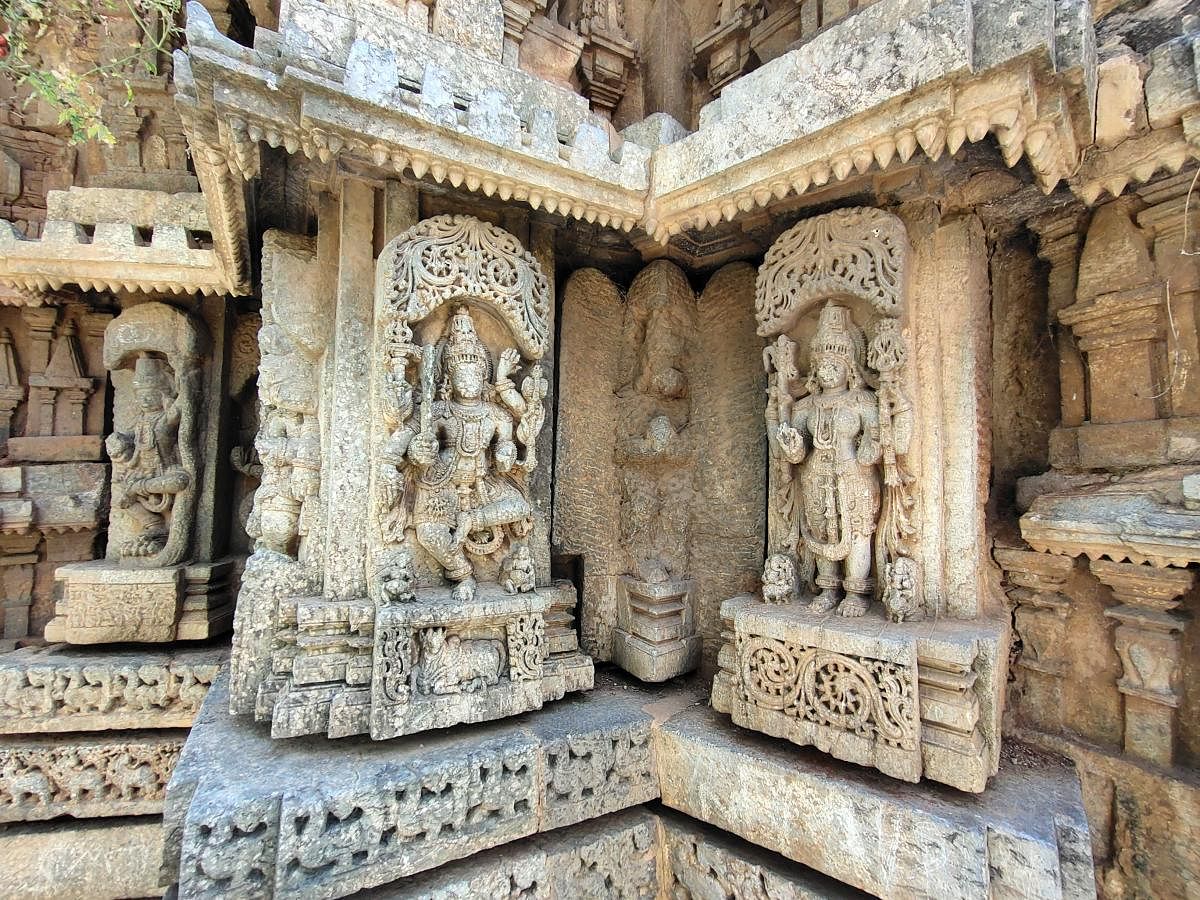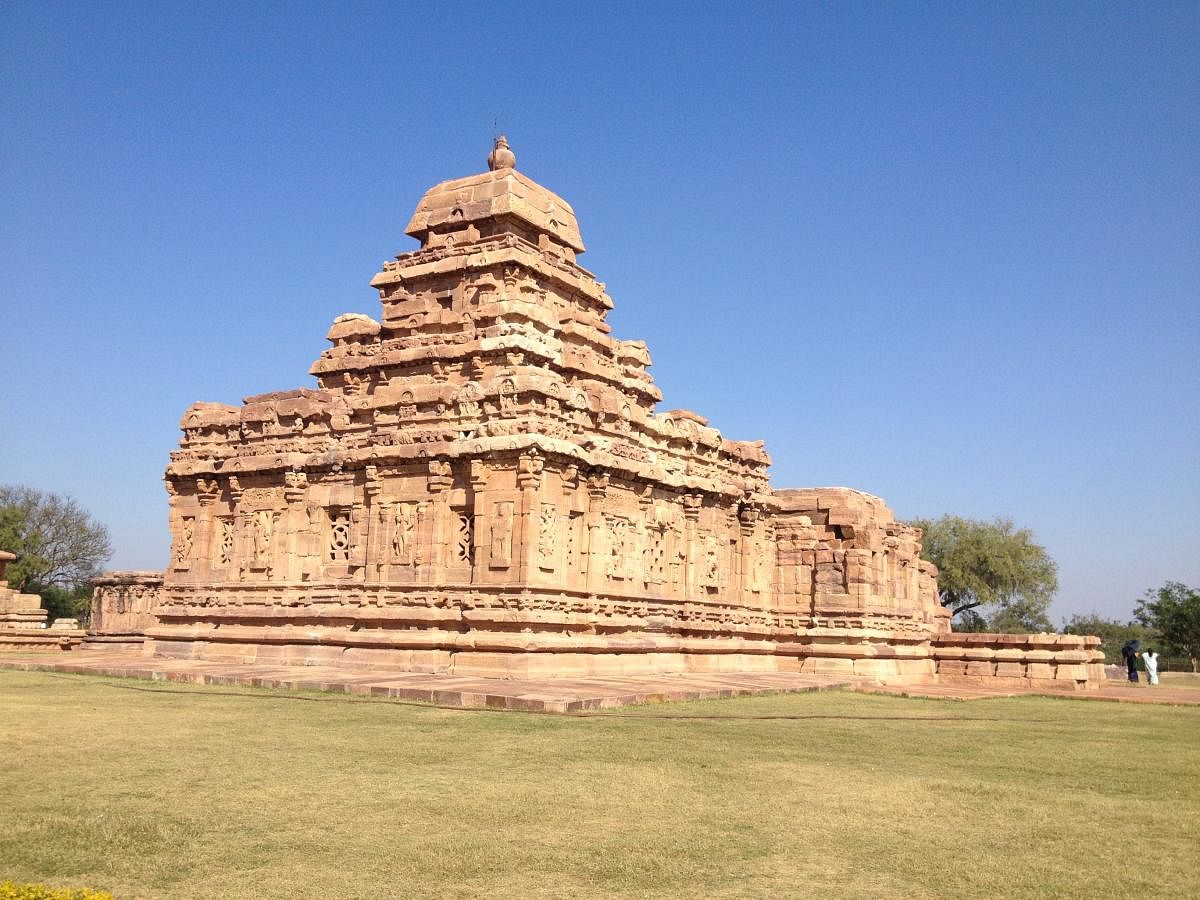

It was a conversation with one of the caretakers of the Pattadakallu temples that led to this article. He remarked that the Early Chalukyan sculptors who carved the cave temples at Badami must have been the very best among early artisans.
“Since they were carving living rock, they could hardly afford mistakes, which later sculptors, working on attachable images, could,” he added. His words remained etched in my mind as I travelled to various monument sites from across centuries, in Karnataka and beyond. Testing the veracity of his statement at those sites opened my eyes to the fascinating world of the working techniques of ancient Indian artisans.
The cave temples of Badami were scooped out of sandstone cliffs, with walls, pillars and sculptural details alike carved strictly by removing material, while the slightly later structural temples were erected using dressed sandstone blocks. It is indeed true that the sculptors carving on the walls of the rock-cut temples at Badami could not afford to make mistakes in their work.
The sculptor who created the 18-armed dancing Shiva near Cave no 1 at Badami must have been a genius to ensure that none of the gracefully articulated limbs broke off while carving this undisputable masterpiece.
In contrast, the artisan who carved the graceful Mahishasuramardini adorning a niche in the Durga Temple at Aihole had the luxury of knowing that this image, to be inserted separately, could be begun all over again on another block of stone, in case it did not turn out well.
Nevertheless, structural temples did not always employ insertable sculptures. A large number of them were erected, leaving rough blocks of stone in place, which were to be carved into images later.
In the unfinished Galaganatha Temple at Pattadakallu, out of six beam-end-like projections below a niche, only three have been carved with figures (Figure 4). Clearly, the carving commenced after the stone blocks were in position. The Sangameshwara Temple, also at Pattadakallu, appears more complete than the Galaganatha, but closer scrutiny reveals that several of the figures on its walls are unfinished. Here too, masses of rock were left in place during the erection of the temple structure, leaving the carving of images for later.
Later monuments too offer fascinating insights into the working method of their builders. Remarkably, it is unfinished monuments, or the unfinished parts in an otherwise finished structure, which provide these insights.
The Someshwara Temple at Haranhalli was built more than four centuries after the temples of Pattadakallu, during the period of Hoysala rule. This temple, though complete enough to be consecrated, has unfinished portions which tell us how its builders worked. Large swathes of the six basement friezes of this temple are blank, with outlines and roughly blocked out figures showing the different stages in the carving of images. Obviously, the basement friezes were in place while artisans carved images on them.
Many of the large wall images here remain unfinished, too. Some of these are merely masses of rock awaiting further shaping, while others have been roughly blocked out. Even these unfinished images have the architectural mouldings of the temple scheme incised into them, suggesting that different professionals worked on the mouldings and the images.
Curiously, most of the unfinished images are in awkward corners. Since the images positioned in these hard-to-reach corners are notoriously difficult to carve, their finishing might have been kept for the end.
Images like the exquisitely carved Garuda at the Lakshminarasimha Temple at Nuggehalli demonstrate how a fine finishing was possible even in such corners. Is it possible that such images were carved in a workshop, and then inserted as finished pieces in the structure? A couple of corner images from the same temple suggest otherwise. Both these images show noticeable sections that are unfinished in the lower portions that are more difficult to reach. This would not be the case if they had been carved in a workshop, clearly indicating that these images were carved in situ.
Stella Kramrisch has observed that in temples of the Deccan, details were often carved in situ. Col. Meadows Taylor also opined that, “carved blocks were first dressed to the required outline, fixed in their positions in the building and then carved in situ.” Clearly, this makes the sculpting every bit as challenging as carving in rock-cut temples.
But why did the architects of structural temples adopt this method of working? Possibly, they were ensuring that a usable structure could be handed over to the patrons by the date of consecration, even if some of the embellishments remained unfinished. Supporting this hypothesis is the Mondusale Gudi at Somanathapura, which is a completed structure where no images have been carved. There are blank stele-like stone plaques all along the walls which could have been later carved into images.
How these ancient artisans carved images in awkward locations has fascinated many scholars. Vidya Dehejia has expressed wonder at “how a sculptor would have room to manipulate his chisel and hammer within the tight spaces of these recesses” while Alexander Rea speculated that in deeply cut images, “often with the merest eyehole into which the chisel could be inserted, the carving tools must have been of the slenderest make.”
Even with these fleeting glimpses into the world of the ancient Indian artisan, I cannot help but feel a deep sense of awe at the ingenuity of those generations of sculptors who left us such masterpieces to marvel at.
(The author is with the National Institute of Advanced Studies, Bengaluru.)